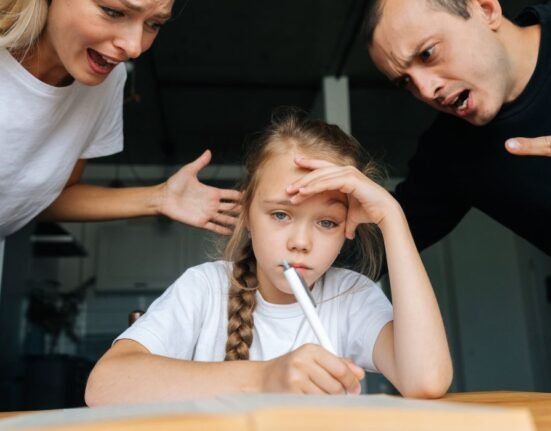Comprehensive treatment model (CTM) refers to those intervention approaches for children under the Autism spectrum. It includes multiple practices to approach a broad learning goal. Treatment and Education of Autistic and Related Communication Handicapped Children (TEACCH) is one of the CTM interventions. The ultimate goal of TEACCH is to work on the abilities, interests, and strengths of autistic children to make them independent in life. The development of the philosophy of TEACCH has been influenced by Developmental psychology and cognitive and social learning theory.
History
The development of TEACCH Can be traced back to the 1960s at The University of North Carolina In the United States. When Eric Schopler was a student at The University of Chicago he had a Professor named Bruno Bettelheim who had an extreme view about autism. According to him, autistic children were the result of emotionally cold parents and he believed that keeping the children away from parents will help them recover. Eric Schopler felt this idea was unsound and it could harm the lives of autistic children and their parents.
Eric Schopler realized that there is a strong need for empirical research that will help to develop a more viable approach to treating autism. His studies revealed two important things that later became the pith of developing TEACCH. The first one was that structured and organized teaching methods can help them more than unstructured methods. He also found that parental collaboration in therapy can elicit better performance in children with autism.
Read more: Research: A New Autism Diagnosis Method through Children’s Eye Movements
The Key Principles of TEACCH
Physical Structure
Physical structure refers to our surroundings where we act and interact. What are the rooms in your house? You have a bedroom, bathroom, kitchen, and dining hall all of these are meant for different activities which makes the house more organized now let us talk about neurodiverse people. For them, we will bring organization within the room that is we can divide it with boundaries and furniture to make the place more predictable, systematic, and less distracting. This will help them in smoother transitions and reduce anxiety.
Read more: How Nature Therapy can help people with Autism?
Visual Structure
The neuro-typical people mostly communicate verbally and we try to put the same pressure on the neurodiverse spectrum as well. Is this practical? Is this the only way to communicate?
Visual cards and Visual schedules can be good sources of communication for those who are autistic. It is important to know the person’s level of understanding and accordingly provide them with visual cues which can be object level, picture level, word level or you can use a combination of words along with pictures. The goal is to help them with their expectation, give them reminders, and help them in expressing themselves with more flexibility.
Work System
A work system refers to a proper structure in activity which will give them a better idea about what they are supposed to do, how much work is to be done, when will they get it done, and what will happen if it is done. This way their environment will be less triggering, and more predictable which will help in adaptation.
Routine
Developing an individualized routine and maintaining it will help the neurodiverse population. Decide the activity and then its steps, now turn this into a schedule that can be used regularly to perform the activity. Consistency will make the routine more expectation-based and will make them feel safe.
Read more: World Autism Acceptance Week 2024
Why Parental Collaboration is Important in TEACCH?
Hedda Meadan and her colleagues observed twelve studies of parent-implemented intervention with young children on the autism spectrum. The studies concluded that the parents were successful in learning novel strategies that can be used with the children at home also, the usage of these by the parents helped to improve the children’s communication and social skills. Recently some of the top autism researchers were asked by the American Academy of Pediatrics to suggest the best way to get involved with young children who fall under the spectrum and they recommended that the parents should be involved in the child’s intervention. When the daily routine changes to learning opportunities then this will provide the child with more chances to exhibit their skills in daily life situations and will not be just limited to the time of therapy.
1. Educate the parents
TEACCH is not an approach, it is a philosophy to work with autistic children. The first session should be with the parents to educate them about this philosophy and provide them with a briefing about the basic principles of TEACCH. Keep them informed about how you will work with the child this will help them too as they will also get ideas on how to spend time with their children effectively.
Read More: Parenting with Neurodiversity: Nurturing Diverse Minds
2. Obtain Better Results
The therapist develops strategies to work with the child and he/she will need repeated exposure to get trained based on it. If we keep this limited to the period of therapy then the amount of exposure will be much less on the other hand if we try to educate the parents about it, then the parents can include this in the child’s daily life activities which will eventually give us more results. This doesn’t mean that the parents should always be behind the child burdening them with work for results.
Read more: 10 Self-Care Strategies for Parents
3. To understand the child better
The parents are the ones who will spend more hours with the child compared to the therapist. They have more room for observing the child, their likes, dislikes, behaviors, responses, triggers, etc. An active collaboration between parents and therapists will help the therapist to understand the child better and faster which helps in designing the strategies for the child more efficiently.
Read More: Understanding Play Therapy Through the Lens of “Taare Zameen par”
4. To know what to work on
The goal of TEACCH is to make the child independent. This means helping the child do their daily life activities. As a therapist, we only spend limited time with the child while the parents will better understand what the child can and cannot do. Discuss deeply about the child’s abilities and the parent’s expectations. As a therapist, you should also be able to differentiate between realistic and unrealistic expectations and treat the child fairly.
5. Develop a safer Space for the child
Unrealistic expectations and the need for quick results are very common among parents. Many a time the child’s behavior might be marked as unruly and defiant but this will be a result of a sensory need or emotional trigger. As a therapist, you should give them a better awareness of these behaviours and prepare the parents to wait and be happy with the child’s tiny improvements. This will also reduce the pressure on the child and will provide them with a safer space.
Read more: Role of Play in Child Development and Emotional Expression
Conclusion
According to TEACCH Autism is a culture to be accepted and not a condition to be cured. Some are neurodivergent while others are neurotypical. Nobody is abnormal we are just different. Let us make the world a better place by making it more neuro-affirmative because everybody is different.
References +
- Treatment and Education of Autistic and related Communications Handicapped Children (TEACCH). (2022, May 24). Raising Children Network. https://raisingchildren.net.au/autism/therapies-guide/teacch
- Mesibov, G. B., Shea, V., Schopler, E., Adams, L., Merkler, E., Burgess, S., Mosconi, M., Chapman, S. M., Tanner, C., & Van Bourgondien, M. E. (2004). The origins and history of the TEACCH program. In Springer eBooks (pp. 1–12). https://doi.org/10.1007/978-0-306-48647-0_1
- The power of parents in autism intervention. (n.d.). https://www.hanen.org/Helpful-Info/Articles/The-Power-of-Parents-in-Autism-Intervention.aspx
- Staff. (2023, November 6). Working Together: How Parents Can Collaborate with School Teachers for the Benefit of their Autistic Child – Harsha Autism Center. Harsha Autism Center. https://harshaautism.com/working-together-how-parents-can-collaborate-with-school-teachers-for-the-benefit-of-their-autistic-child/#:~:text=Parents%20can%3A,all%20students%20with%20similar%20needs
- Applied Behavior Analysis Programs Guide. (2021, September 29). 5 Key principles of the TEACCH method. https://www.appliedbehavioranalysisprograms.com/lists/key-principles-of-the-teacch-method/
- Coughlan, T., Mackley, K. L., Brown, M. A., & Hine, N. (2013). Current issues and future directions in methods for studying technology in the home. ResearchGate. https://www.researchgate.net/publication/258802035_Current_Issues_and_Future_Directions_in_Methods_for_Studying_Technology_in_the_Home
- Noni, Soetikno, N., & Mar’at, S. (2021). TEACCH for Parents and Child with Autism Spectrum Disorder: A Review of the Literature. Atlantis Press. https://doi.org/10.2991/ahsr.k.211130.032













Leave feedback about this